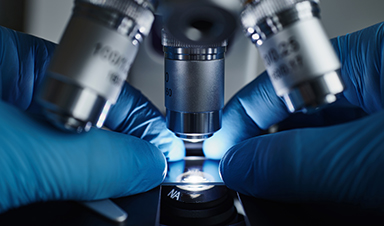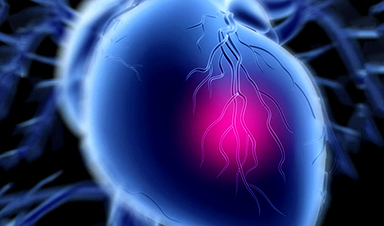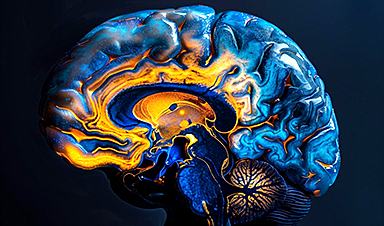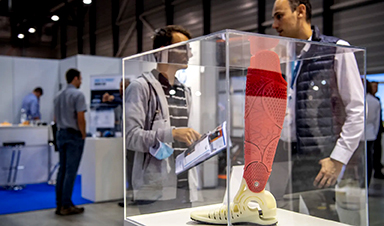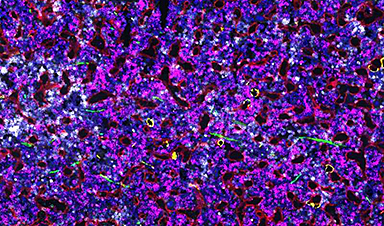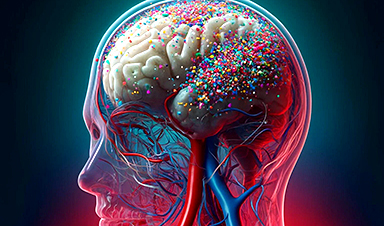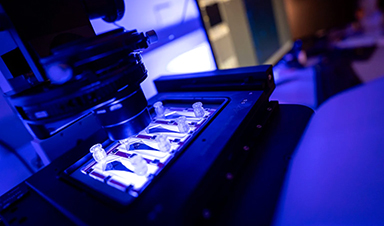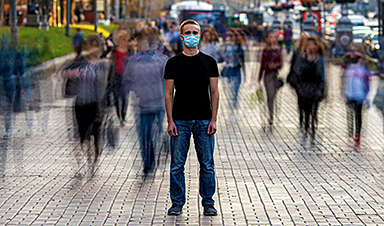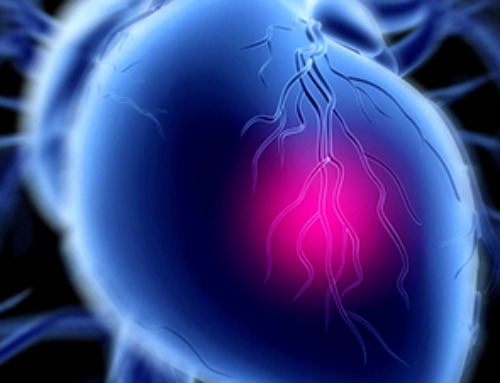A team of researchers at the Swiss Federal Institute of Technology has developed a high-performance Scanning Ion Conductance Microscope (SICM) using the latest advances in nanopositioning, nanopore fabrication, microelectronics and controls engineering.
Time-resolved scanning allows the 3D visualization of dynamic structures in a eukaryotic cell membrane at nanometer resolutions.
Studying the functions of living cells and organelles at the nanoscale is vital to understanding the causes of disease. Traditional approaches, including electron microscopy, may, unfortunately, damage these cells.
The Swiss researchers developed a SCIM microscope that resolves spatiotemporally diverse three-dimensional processes on a eukaryotic cell membrane at sub-5 nanometer axial resolution. This may offer insights into intracell interactions in the fight against infections and disease.
The Origins of Scanning Probe Microscopy
Studying the intricate functions of living cells at the nanoscale is a unique challenge. Researchers have developed a range of techniques to meet this challenge, including atomic force microscopy (AFM), scanning tunneling microscopy (STM) and Scanning Probe Electrochemistry (SPE).
Scanning probe microscopy (SPM) forms images of surfaces using a probe that scans the specimen. The technique made its first appearance in 1981 in the form of the scanning tunneling microscope, which produces images at atomic resolution by scanning a specimen using a probe.
In scanning probe microscopes, piezoelectric actuators move the probe with atomic-level precision controlled by electronics. The probe raster scans the specimen. It captures discrete data points which are used to form an image. Its manner of scanning is called a mode.
Scanning Ion Conductance Microscopy (SICM) was developed by P.K. Hansma and his colleagues at the University of California in 1989. An electrolyte-containing aqueous medium is a poor conductor.
A SCIM microscope scans a nanoprobe (micro-pipette with a 50 to 100 nm hole) close to the surface of the specimen. As the probe moves across the specimen, ionic currents flow through the pipette. The strengths of these currents vary according to the electrical resistance across the sample’s surface, thus revealing information about its composition.
In the hopping mode described by the Swiss team, however, the nanoprobe is not raster scanned. It moves vertically up and down in a hopping motion.
The probe approaches the specimen at a distance of 25 to 50 nm at specified points and retracts, thus providing discrete points of measurement from which an image is formed. Crucially, the probe never touches the specimen, thus preventing damage to the sample.
SCIM microscopy is, therefore, a powerful tool for capturing the steep changes in a cell’s topography without affecting the sample.
Time-Resolved Scanning Ion Conductance Microscopy
Time-resolved SICM microscopes produce high-resolution profiles of cell shapes and surface characteristics. However, these need to be correlated with biochemical information and changes to the internal organization of the cells.
The Swiss team integrated an inverted optical microscope to a SICM microscope which allowed them to combine recently developed super-resolution microscopy techniques into their approach.
The SICM setup consisted of a custom-built pipette Z-actuator (vertical actuator) integrated into a controlled-atmosphere device, critical for cell viability during imaging.
The imaging of eukaryotic cells requires piezo actuators with a long-range (>10−20 μm). This leads to a trade-off between resonance frequency and the range of the actuator. The team overcame this by adaptively slowing down the pipette’s velocity and applying a gain to the piezo motion as a function of the current interaction curve.
The Z-actuator achieved a wide mechanical displacement amplification of 22 μm scanning range on the cell surface. It was driven by a custom-made piezo controller and integrated with a stepper-motor stage for approaching the sample.
The team used borosilicate and quartz nanopipettes for probing. They were fabricated with a CO2 laser puller with a radius of 20 to 60 nm in size. Quartz capillaries were shrunk to a sub-10-nm radius using electron beam irradiation.
Many cellular processes occur at time scales of minutes or hours and are easily trackable with time-lapse SICM. Subcellular processes, such as endocytosis or infection, however, occur much faster. The Swiss team’s technique combines the capability to address large imaging volumes (up to 220 000 μm3) relatively quickly with high-speed SICM imaging of small details on live cells.
The wide range of measurements possible (Scan sizes from 500 × 500 nm2 to 100 × 100 μm2, imaging speeds from 0.5 s/image to 20 min/image; Number of pixels per image from 1 Kp to 1 Mp; Depth of view of 22 μm with axial resolution below 10 nm) significantly enhances the range of biological studies facilitated by SICM microscopy.
News
Challenging Previous Beliefs: Japanese Scientists Discover Hidden Protector of Heart
A Japanese research team found that the oxidized form of glutathione (GSSG) may protect heart tissue by modifying a key protein, potentially offering a novel therapeutic approach for ischemic heart failure. A new study [...]
Millions May Have Long COVID – So Why Can’t They Get Diagnosed?
Millions of people in England may be living with Long Covid without even realizing it. A large-scale analysis found that nearly 10% suspect they might have the condition but remain uncertain, often due to [...]
Researchers Reveal What Happens to Your Brain When You Don’t Get Enough Sleep
What if poor sleep was doing more than just making you tired? Researchers have discovered that disrupted sleep in older adults interferes with the brain’s ability to clean out waste, leading to memory problems [...]
How to prevent chronic inflammation from zombie-like cells that accumulate with age
In humans and other multicellular organisms, cells multiply. This defining feature allows embryos to grow into adulthood, and enables the healing of the many bumps, bruises and scrapes along the way. Certain factors can [...]
Breakthrough for long Covid patients who lost sense of smell
A breakthrough nasal surgery has restored the sense of smell for a dozen long Covid patients. Experts at University College London Hospitals NHS Foundation Trust successfully employed a technique typically used for correcting blocked nasal passages, [...]
Scientists Invent Plastic That Can Dissolve In Seawater In Just A Few Hours
Plastic waste and pollution in the sea have been among the most serious environmental problems for decades, causing immense damage to marine life and ecosystems. However, a breakthrough discovery may offer a game-changing solution. [...]
Muscles from the 3D printer
Swiss researchers have developed a method for printing artificial muscles out of silicone. In the future, these could be used on both humans and robots. Swiss researchers have succeeded in printing artificial muscles out [...]
Beneficial genetic changes observed in regular blood donors
Researchers at the Francis Crick Institute have identified genetic changes in blood stem cells from frequent blood donors that support the production of new, non-cancerous cells. Understanding the differences in the mutations that accumulate [...]
Shocking Amounts of Microplastics in the Brain – It Could Be Increasing Our Risk of Dementia
The brain has higher concentrations of plastic particles compared to other organs, with increased levels found in dementia patients. In a comprehensive commentary published in Brain Medicine, researchers highlight alarming new evidence of microplastic accumulation [...]
Baffling Scientists for Centuries: New Study Unravels Mystery of Static Electricity
ISTA physicists demonstrate that contact electrification depends on the contact history of materials. For centuries, static electricity has intrigued and perplexed scientists. Now, researchers from the Waitukaitis group at the Institute of Science and [...]
Tumor “Stickiness” – Scientists Develop Potential New Way To Predict Cancer’s Spread
UC San Diego researchers have developed a device that predicts breast cancer aggressiveness by measuring tumor cell adhesion. Weakly adherent cells indicate a higher risk of metastasis, especially in early-stage DCIS. This innovation could [...]
Scientists Just Watched Atoms Move for the First Time Using AI
Scientists have developed a groundbreaking AI-driven technique that reveals the hidden movements of nanoparticles, essential in materials science, pharmaceuticals, and electronics. By integrating artificial intelligence with electron microscopy, researchers can now visualize atomic-level changes that were [...]
Scientists Sound Alarm: “Safe” Antibiotic Has Led to an Almost Untreatable Superbug
A recent study reveals that an antibiotic used for liver disease patients may increase their risk of contracting a dangerous superbug. An international team of researchers has discovered that rifaximin, a commonly prescribed antibiotic [...]
Scientists Discover Natural Compound That Stops Cancer Progression
A discovery led by OHSU was made possible by years of study conducted by University of Portland undergraduates. Scientists have discovered a natural compound that can halt a key process involved in the progression [...]
Scientists Just Discovered an RNA That Repairs DNA Damage – And It’s a Game-Changer
Our DNA is constantly under threat — from cell division errors to external factors like sunlight and smoking. Fortunately, cells have intricate repair mechanisms to counteract this damage. Scientists have uncovered a surprising role played by [...]
What Scientists Just Discovered About COVID-19’s Hidden Death Toll
COVID-19 didn’t just claim lives directly—it reshaped mortality patterns worldwide. A major international study found that life expectancy plummeted across most of the 24 analyzed countries, with additional deaths from cardiovascular disease, substance abuse, and mental [...]
